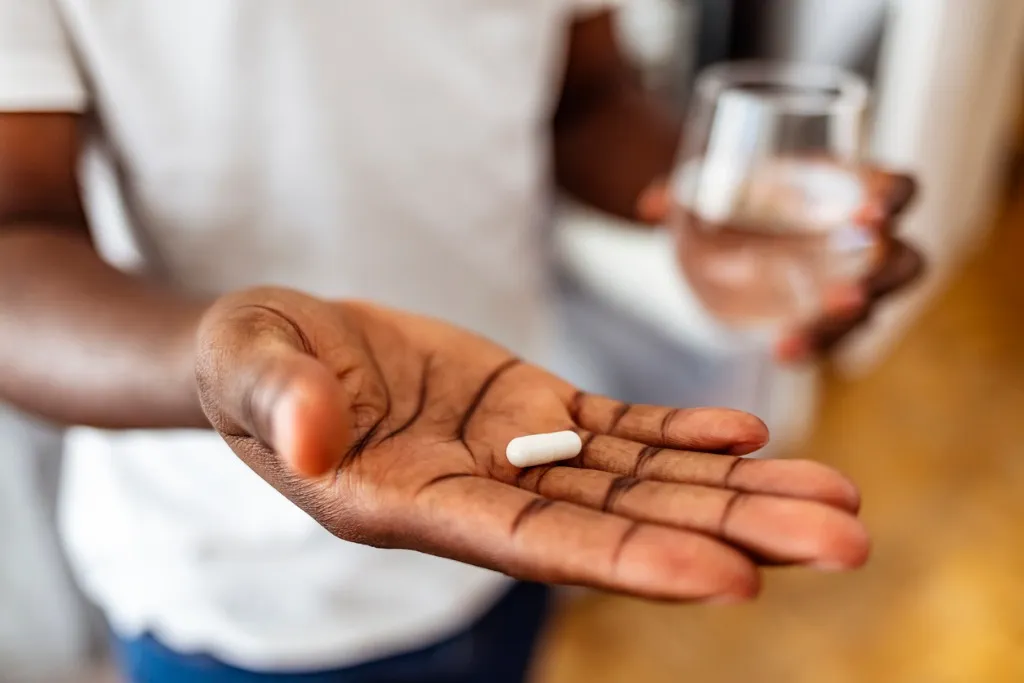Read time : 5 minutes

If you’ve ever rolled out of bed the morning after a workout wondering why your muscles feel like they’ve been through battle, you’re not alone. Muscle soreness after exercise is common—but what exactly causes it? Is it good, bad, or somewhere in between? Let’s break it down.
What Is That Pain, Really?
The soreness you feel after a workout is mostly due to Delayed Onset Muscle Soreness (DOMS). This usually starts 12 to 24 hours after exercise and can last for up to 3 days.
DOMS happens when you push your muscles harder than they’re used to—especially when doing movements that involve eccentric contractions. That’s a fancy way of saying exercises where your muscles are lengthening while working, like when you slowly lower a dumbbell or walk downhill.
What’s really happening inside your body is that tiny microscopic tears form in your muscle fibers. Your body responds with inflammation and a healing process. This repair work is how your muscles get stronger over time.
A study published in the Journal of Athletic Training explains that these micro-tears, along with inflammation and temporary buildup of waste products, are the primary causes of post-exercise muscle soreness (Cheung et al., 2003).
Is It a Good or Bad Thing?
Here’s the good news: feeling sore doesn’t automatically mean you had a “better” workout. It’s just a sign that your body was exposed to something new or more intense than usual. Even professional athletes get DOMS when they try a new training style or increase intensity.
That said, soreness isn’t necessary for progress. As your body adapts to regular exercise, you might feel less sore over time—but that doesn’t mean you aren’t improving.
However, pain is not always a badge of honor. If what you’re feeling is sharp, stabbing, or doesn’t improve with movement, that might be an injury, not regular soreness. Typical DOMS feels like a dull, aching stiffness. Sharp pain? That’s your cue to stop and check with a professional.
Why Does It Hurt More When I’m New to Exercise?
If you’ve just started working out or are returning after a break, DOMS tends to be more intense. That’s because your muscles aren’t used to that kind of stress yet. Even fit people feel sore when they switch up routines.
For example, let’s say you normally go jogging but decide to try squats for the first time. Squats use different muscle groups and demand more eccentric movement from your legs, leading to—you guessed it—DOMS.
Research from the American College of Sports Medicine (ACSM) backs this up, stating that eccentric movements like squats or lunges are more likely to trigger soreness, especially in beginners.
Is It Good to Take Painkillers for DOMS?

When the soreness feels too uncomfortable, you might wonder if reaching for painkillers like ibuprofen or paracetamol is a good idea. While these medications can reduce pain and inflammation, regular use for post-exercise soreness is not recommended unless necessary.
Here’s why: studies suggest that frequent use of anti-inflammatory drugs may interfere with muscle repair and growth. One research article in The Journal of Physiology (Mikkelsen et al., 2017) showed that taking high doses of ibuprofen after resistance training might blunt the muscle-building response.
So while taking an occasional painkiller for severe discomfort is unlikely to cause harm, relying on them after every workout could limit the very progress you’re working for.
A better approach is using non-drug methods like foam rolling, stretching, hydration, and active recovery unless the soreness is severe enough to disrupt daily life. If that’s the case, consult a healthcare provider before using medication regularly.
How Can I Make It Hurt Less?
While you can’t completely prevent DOMS, you can reduce how intense it feels and help your body recover faster. Moving gently—going for a light walk or doing easy stretches—can help increase circulation, easing the soreness.
Foam rolling and massage have been shown to be effective in reducing muscle tightness. A review in the International Journal of Sports Physical Therapy found that foam rolling improves flexibility and reduces muscle pain after exercise (Beardsley & Škarabot, 2015).
Also, hydration matters more than you think. Drinking enough water before, during, and after your workout helps your muscles flush out waste products like lactic acid, speeding up recovery.
Another trick? Active recovery. Doing a light workout the next day—like swimming, stretching, or a gentle bike ride—can ease stiffness better than sitting still.
When Should I Worry About Muscle Pain?
Here’s a simple rule of thumb: if the soreness is symmetrical, dull, and goes away within a few days, it’s normal. But if it’s one-sided, sharp, swollen, or causes bruising, it might be a strain or injury that needs professional attention.
Final Thoughts: Pain Is Part of Growth, But It Shouldn’t Stop You
That soreness you feel after a tough workout is your muscles adapting and getting stronger. It’s uncomfortable—but it’s also temporary. As you build strength and stay consistent, your muscles learn to handle more, and the soreness won’t feel so intense.
So the next time walking down stairs feels like a challenge after leg day, just remember: you’re not broken—you’re building.
Meet Your Ai Personal Trainer
Download the App to Take your free Ai health assessment Today [Take Assessment]
Baah Sekyere Agyekum
Myhealthcop physical activity expert